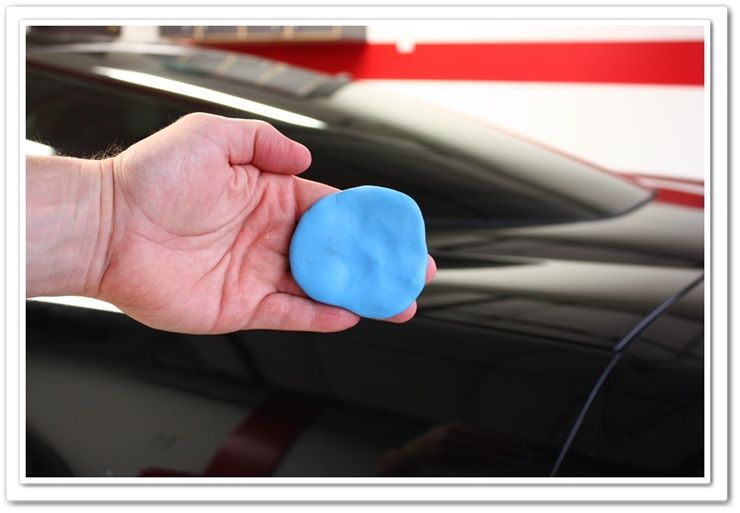Is Polish Pottery Valuable?
What is Polish Pottery?
Polish pottery refers to a type of handmade, hand-painted pottery that originated hundreds of years ago in the Silesia region of Poland (now partly in Germany). It is most commonly associated with the town of Bolesławiec, which became a major pottery center in the 1800s.
Polish pottery draws on various traditional styles like slipware, maiolica, delftware, and stoneware. It is low-fired at around 2,100°F and often has a stone-like quality. The pieces are hand thrown on a potter’s wheel then hand painted in colorful, folk-art inspired designs.
Common motifs include floral patterns, animals, geometric designs, and traditional Polish imagery. No two pieces are exactly alike due to the handmade techniques. The pottery is lead-free, microwave and dishwasher safe.
Today, authentic Polish pottery is still produced mainly in the Bolesławiec region of Poland. Other areas known for Polish pottery include the towns of Chodzież, Szczecin, and Kołobrzeg (Source).
Why Polish Pottery Became Popular
Polish pottery, also known as Boleslawiec pottery, first gained popularity in the United States in the 1980s when it was introduced to the US market. According to The Texas Bucket List, the rise in popularity of Polish pottery is largely attributed to the influence of Army wives stationed in Europe who brought it back home with them.
Compared to other types of fine pottery and porcelain, Polish pottery was relatively affordable yet still perceived as high quality and valuable. As noted by Zaklady Boleslawiec, the craftsmanship, intricate designs, and limited availability contributed to the collectibility and popularity of Polish pottery in America.
The handmade nature, Old World styling, and uniqueness of each Polish pottery piece added to its charm. Polish pottery offered high perceived value for the price point, leading to its rising popularity among American collectors and home decorators in the 1980s and onward.
Factors That Affect Polish Pottery Value
There are several key factors that impact the value of Polish pottery pieces:
Age and condition – Older, antique Polish pottery in excellent condition tends to be more valuable than newer pieces or items with damage or wear. Markings that indicate the date of production can signify added value for vintage or antique items.
Maker marks and stamps – Polish pottery often features stamped markings that identify the specific artist, village, factory, or cooperative where it was produced. Pieces bearing the marks of notable, collectible makers like Boleslawiec Pottery tend to command higher prices.
Rarity of pattern and color – Uncommon patterns, designs, and colors are more valuable than ubiquitous or mass-produced styles. Rare glazes like cobalt blue and specific hand-painted wildlife motifs may also increase worth.

According to Polish Pottery Shop, factories assign prices based on the difficulty of reproducing designs, with the rarest patterns costing more [1]. The Polish Pottery Shoppe also notes each factory ranks designs into price groups based on intricacy and demand [2].
Most Valuable Polish Pottery Styles
When determining the value of Polish pottery, the most important factor is the manufacturer. Pieces produced by the original manufacturer Zaklady Ceramiczne Boleslawiec (ZCB) are highly sought after by collectors and command premium prices, especially items from the 1960s-1980s.
Early pieces made by Kasia, one of the first private Polish pottery companies founded in 1983, are also very valuable due to their rarity and unique hand-painted designs. Kasia was known for distinctive floral patterns and rich, vibrant colors.
Limited edition and rare patterns from any top Polish pottery brands can also drive up value for collectors. Some patterns are only produced for a short time or made in small batches, making them hard to find. Vintage or discontinued patterns like Blue Onion, Red Onion, Pomegranate, Blue Cala Lily, and Blue Peacock are very valuable on the secondary market.
According to Polish Pottery Outlet, rare patterns can sell for up to 50% more than comparable pieces. The uniqueness and scarcity of patterns play a key role in determining the value of Polish pottery.
Sources:
https://www.polishpotteryoutlet.com/The_Polish_Pottery_Primer.php
Typical Polish Pottery Prices
Polish pottery can vary greatly in price depending on the maker, pattern, age, condition, and rarity. However, some general price ranges exist:
On sites like eBay, average resale prices for used Polish pottery tend to range from $20-$50 for small items like mugs or bowls, $50-$150 for medium items like casserole dishes, and $150-$300 for large, decorative pieces (source). Highly desirable makers like Zaklady Ceramiczne Boleslawiec (ZCB), Wanda, and Celtic can fetch higher prices.
For new, first-quality Polish pottery bought directly from distributors, prices are often $20-$60 for mugs, $40-$100 for bowls and plates, $60-$200 for casserole dishes, and $100-$400+ for ornate vases, cake plates, and serving platters. Sets are more expensive.
Some of the most valuable patterns that consistently receive high prices are Peacock Tail, Cornflower, and Butterfly Garden from ZCB and Blue Camillia from Wanda (source). Condition, age, and rarity impact prices too.
While Polish pottery can appreciate in value, most resale prices remain modest compared to original retail prices. Still, rare patterns, makers, and flawless condition can result in valuable Polish pottery pieces.
Signs of Authentic, Valuable Polish Pottery
There are certain key indicators to look for when determining if a piece of Polish pottery is authentic and potentially valuable. Some of the main signs include:
Maker’s stamps and markings – All genuine Polish pottery will be stamped or marked with the name of the studio or artist. Common stamps to look for include Boleslawiec marks like the Unikat mark, Wiza mark, and Zonemark stamps that indicate the region of Poland the pottery was made in. The stamps are usually found on the bottom of pieces.1
Types of clay, glazes, colors used – Authentic Polish pottery uses natural, high-quality clays and lead-free glazes. Traditional colors include cobalt blue, brick red, mustard yellow, sage green and brown. The glazes have a distinctive satin-like finish.2
Quality of painting and detailing – Valuable antique or vintage Polish pottery will have intricate, hand-painted detailing and patterns. Some motifs include flowers, animals, landscapes and geometric shapes. The quality of the brushwork and painting is another indicator of value.
Caring for and Maintaining Value
Properly caring for Polish pottery is essential to preserving its beauty and value over time. According to this guide, there are a few key things to keep in mind.
For cleaning, avoid using harsh abrasives and cleansers that can damage the finish. Instead, handwash pieces in warm, soapy water using a soft cloth or sponge. According to experts, abrasive scouring pads should also be avoided. If needed, a non-scratch scrub sponge can help remove stuck-on food. Dishwashers are safe for most Polish pottery but handwashing is recommended for decorative and antique pieces.
Proper storage is also important. Polish pottery is durable but chips or cracks can still occur if items bang together. Use padding between pieces or store them individually in felt bags. Avoid exposing pottery to rapid temperature changes which can cause crazing. Storing pieces in a cool, dry place is ideal.
For minor chips or cracks, specialty glues like Super Glue Gel can often repair the damage well. Consult a professional if the damage is more extensive. With proper care, most quality Polish pottery will remain beautiful and functional for many years.
Selling and Appraising Polish Pottery
For those lucky enough to own rare or valuable Polish pottery pieces, knowing where and how to sell them is important to getting the best price. Some of the best places to sell high-end Polish pottery include:
Auction houses – Major auction houses like Sotheby’s, Christie’s, and Bonhams periodically hold sales dedicated to Polish pottery. Their experts can appraise and authenticate pieces, and their auctions attract deep-pocketed buyers.[1]
Specialty antique stores – Shops specializing in antiques, collectibles, and decorative arts may be interested in rare Polish pottery. They cater to discerning buyers willing to pay top dollar.[2]
Online marketplaces – Sites like eBay and Etsy enable sellers to reach buyers globally. Scarce pieces tend to fetch higher prices than common pieces.[3]
To get pieces appraised, connect with a reputable antiques dealer or auction house expert. They can examine the pottery and provide insight into its rarity, demand, condition, and value based on real sales data. An accurate professional appraisal ensures you understand what your Polish pottery is truly worth before selling.
Future Outlook and Investment Potential
The future for Polish pottery looks bright, with predictions of continued popularity and growth in the years ahead. According to Polish Pottery in the Global Market: Trends and Predictions, the global demand for authentic Polish pottery is expected to grow by 5-8% annually through 2025.
New pottery styles and designs are constantly emerging from villages like Boleslawiec. Artisans are experimenting with new patterns, colors, and shapes to appeal to changing consumer tastes. While some fear market saturation, leading pottery houses like Zaklady Boleslawiec are innovating and expanding their offerings to keep up with demand.
As Polish pottery gains prominence internationally, prices are expected to increase, especially for rare patterns and styles. Pieces produced by renowned makers can appreciate in value over time, making Polish pottery a potential investment for collectors. However, prices may fluctuate depending on factors like condition and desirability.
While the Polish pottery market faces some saturation concerns, forecasters remain optimistic about growth and opportunities. As interest expands globally, Polish pottery is likely to gain value as a collectible handicraft and artistic tradition.
Summary and Conclusions
In summary, Polish pottery can certainly be quite valuable, especially vintage or antique pieces from respected makers like Wiza, Chodziez, Ceramika Artystyczna, and Unikat. Key factors that increase value include age, condition, maker marks, limited production runs, innovative glazes and painting techniques, and desirability of patterns.
When looking for valuable Polish pottery, authenticate by looking for official maker marks, high quality clay, vibrant glazes, and hand-painted detailing. Beware of fakes and reproductions. Well-cared for pieces in excellent condition also command higher prices.
For collectors, Polish pottery remains a handcrafted and folk art-inspired niche to watch. As with any collectible, condition is critical. Rare patterns and early pieces are most in-demand. The outlook is strong for distinctive vintage and antique Polish pottery as it grows more scarce over time.
In conclusion, with its deep roots as a traditional craft, inherent artistry, and range of styles, Polish pottery can be quite valuable for discerning collectors. Checking for authenticity and targeting special pieces is key to finding value.



